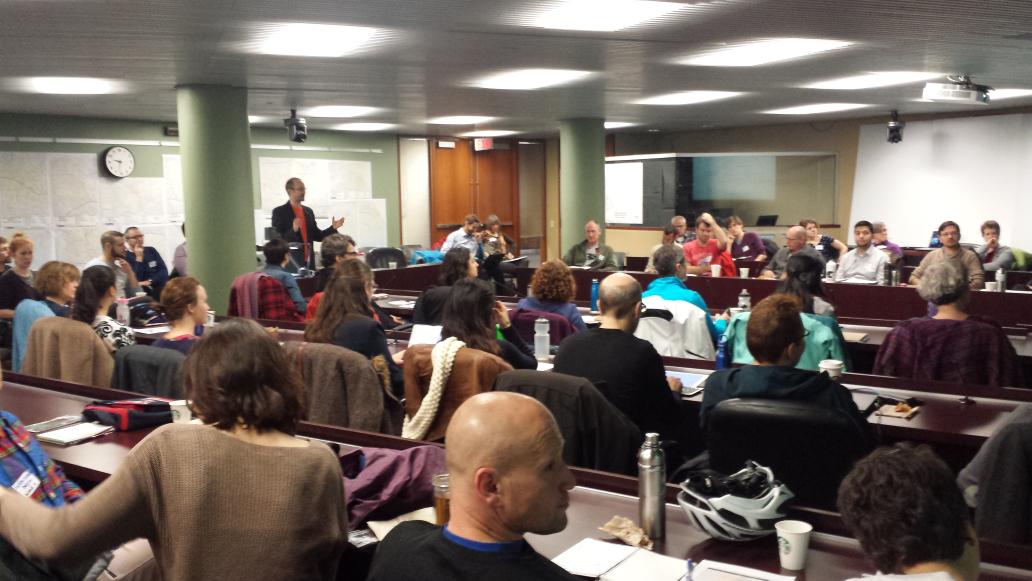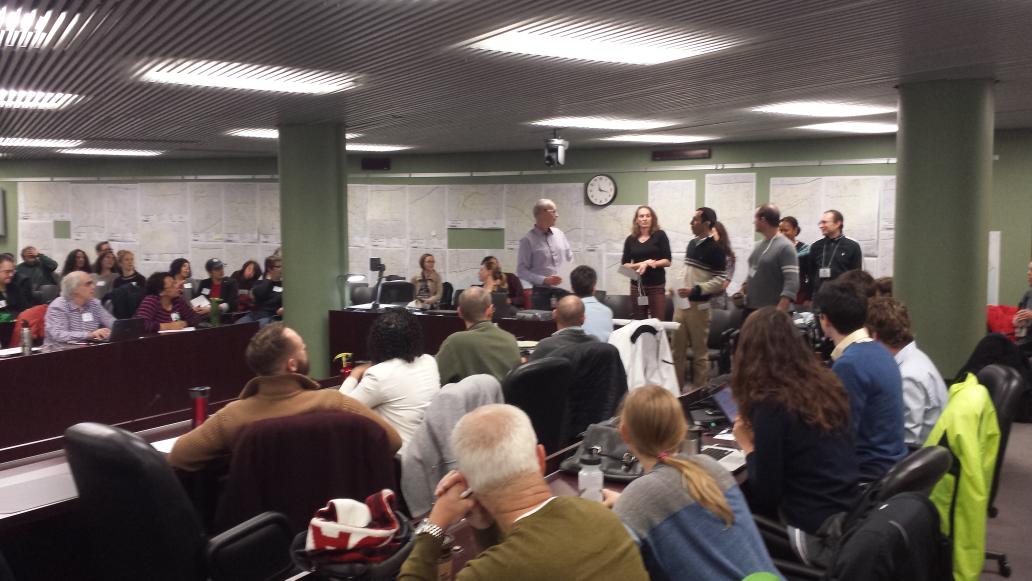Day 1
 |
| Councillor Layton kicking off Skills Swap (via Cycle Toronto) |
Layton’s speech was followed by a ward advocacy presentation from Jared Kolb (Executive Director), Mark Romeril (Ward Advocacy Manager), and Liz Sutherland (Board Member and Advocacy Committee Chair). Kolb mentioned Cycle Toronto has 2861 members and compared two proposed contraflow bike lanes on Shaw and Glen Cedar. Shaw succeeded thanks to a bike friendly councillor, a strong advocacy group, and support from schools in which children made deputations. Glen Cedar, however, was deferred due to a perceived lack of support. Romeril discussed the ward groups’ main functions such as chair, communications, advocacy, and outreach; while Sutherland took suggestions from participants on collaboration between ward groups and other stakeholders.
 |
| Cycle Toronto Executive Director Jared Kolb |
 |
| Bike Parade on Hamilton's Cannon Street |
Day one finished with a business engagement session. Daniel Arancibia of the Toronto Cycling Think and Do Tank discussed business concerns about cycling infrastructure leading to a loss of customers. However, research confirmed fewer than 10% of customers in The Annex arrive by car, while cyclists spend more than drivers. Monique Drepaul of the Eglinton Way Business Improvement Area (BIA) referenced Malcolm Gladwell’s “The Tipping Point” and how the research enabled her to convince the BIA board to support Eglinton Connects, which prompted other BIA’s to follow suit. She encouraged advocates to keep their requests brief and do the necessary due diligence and collaboration when lobbying BIA’s, given staffing and time management limitations. Drepaul also referenced other bike friendly BIA’s such as Downtown Boston for cycling wayfinding and Wellington West in Ottawa, Ontario’s first bike-friendly BIA.
Day 2
 |
| City of Toronto Cycling Unit Staff (via Cycle Toronto) |
Some recent successes Egan mentioned include the following:
- Rapid multi-use trail network expansion since 2009, including the 2012 Trails Implementation Plan consisting of 77 kilometres of trails at a cost of $60 million.
- Toronto’s first separated bike lanes on Sherbourne, Wellesley, and Richmond-Adelaide.
- Approval of transit related projects such as Eglinton Connects.
- A new winter bike lane maintenance program starting next year.
- A new mobile cycling app to collect data for the new bike plan.
 |
| Data from City of Toronto Cycling App |
While providing city staff with input is important in establishing the new bike plan, cycling advocates must now take their experiences back to their neighbours, local businesses, and councillors to help make that plan a reality.
Bring it on!
Rob Z (e-mail)

No comments:
Post a Comment